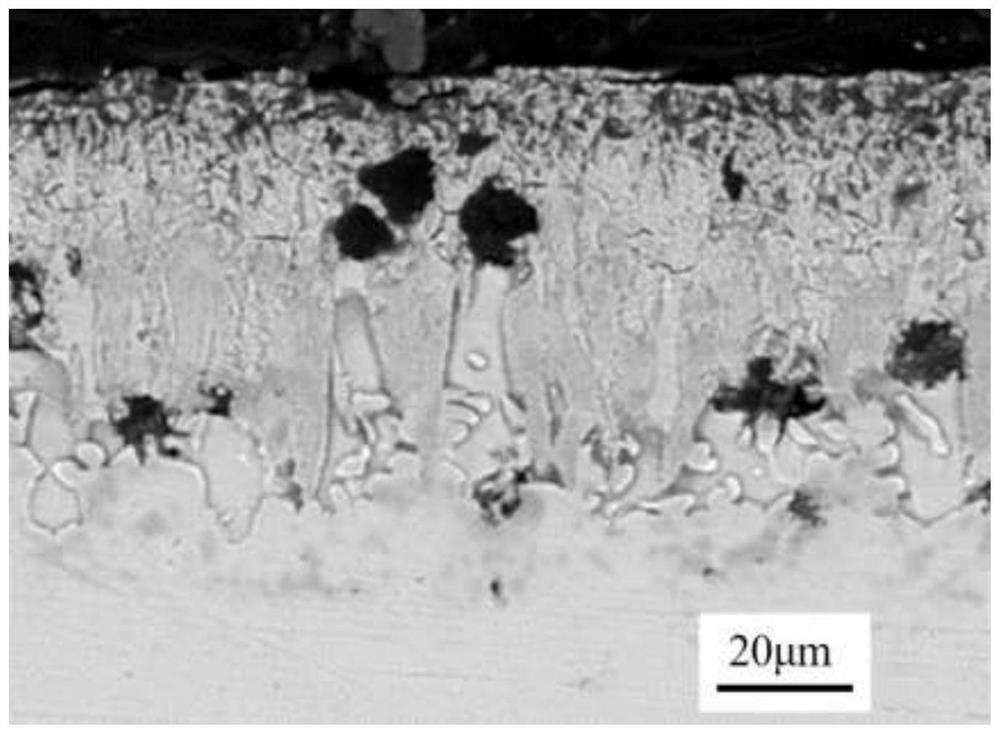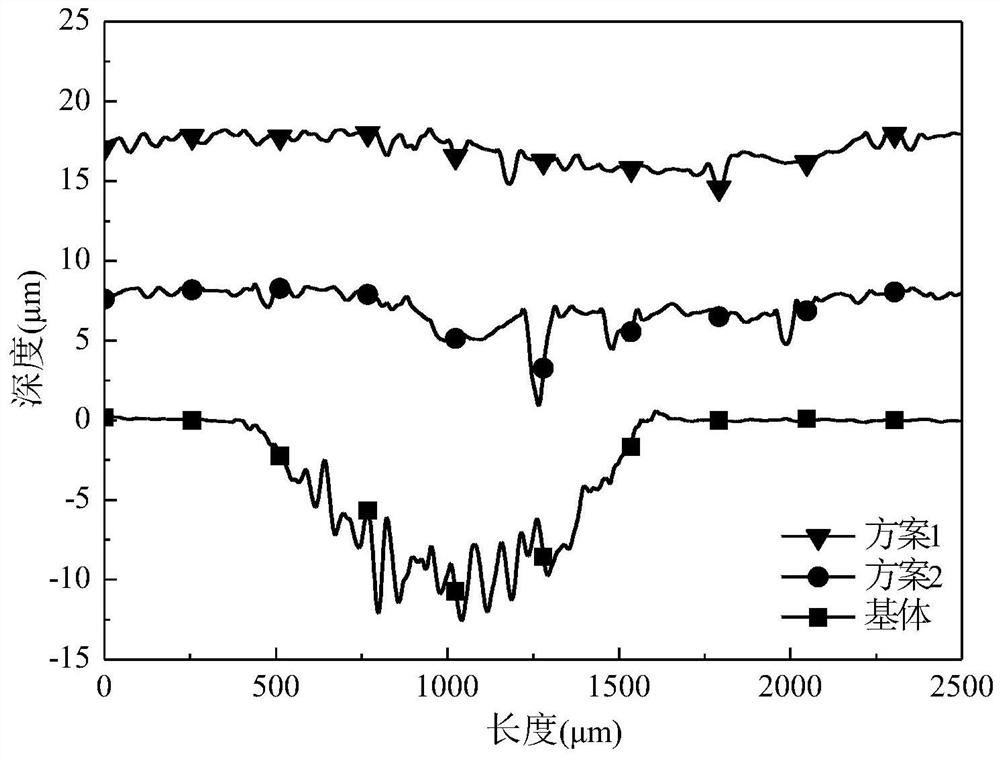Preparation method adopting low-temperature boronizing for wear-resistant surface of nodular cast iron
A technology of nodular cast iron and boronizing, which is applied in the direction of coating, metal material coating process, solid-state diffusion coating, etc., can solve the problems of restricting the application of nodular cast iron and the increase of thermal deformation of parts, and achieve high hardness and good wear resistance Sexuality and easy operation
- Summary
- Abstract
- Description
- Claims
- Application Information
AI Technical Summary
Problems solved by technology
Method used
Image
Examples
Embodiment 1
[0057] 1. Use 600#, 800#, 1000# and 1200# sandpaper to polish the nodular cast iron sample in sequence to remove the surface oxide layer. Clean them in an ultrasonic cleaner for 10 minutes with absolute ethanol and acetone in turn, then dry them and store them for later use.
[0058] 2. Put the sample into the phosphating solution for phosphating treatment, the phosphating solution: 4% phosphoric acid, 5% nitrate, 3% zinc oxide, 2% citric acid, 1% stabilizer and the remaining amount of water; the time of the phosphating treatment is 5 minutes, and the temperature is normal temperature. After phosphating, the samples were washed with water and dried.
[0059] 3. The composition of boronizing agent is: 6% boron carbide (B 4 C), 10% potassium fluoroborate (KBF 4 ), 83% silicon carbide (SiC), 1% lanthanum oxide (La 2 o 3 ). Weigh the boronizing agent according to the distribution ratio of each component, and refine the boronizing agent by ball milling. The ball milling time ...
Embodiment 2
[0067] 1. Use 600#, 800#, 1000# and 1200# sandpaper to polish the nodular cast iron sample in sequence to remove the surface oxide layer. Clean them in an ultrasonic cleaner for 10 minutes with absolute ethanol and acetone in turn, then dry them and store them for later use.
[0068] 2. Put the sample into the phosphating solution for phosphating treatment, the phosphating solution: 3% phosphoric acid, 5% nitrate, 4% zinc oxide, 2% citric acid, 2% stabilizer and the remaining amount of water; the time of the phosphating treatment is 5 minutes, and the temperature is normal temperature. After phosphating, the samples were washed with water and dried.
[0069] 3. The composition of boronizing agent is: 5% boron carbide (B 4 C), 10% potassium fluoroborate (KBF 4 ), 83% silicon carbide (SiC), 2% cerium oxide (CeO 2 ). Weigh the boronizing agent according to the distribution ratio of each component, and refine the boronizing agent by ball milling. The ball milling time is 6 ho...
Embodiment 3
[0077] A method for preparing a low-temperature boronized ductile iron wear-resistant surface of the present invention is specifically implemented according to the following steps:
[0078] Step 1, ductile iron pretreatment;
[0079] Preprocessing in step 1 includes:
[0080] Step 1.1, use metallographic sandpaper of 600#, 800#, 1000# and 1200# to polish the ductile iron successively, and remove the surface oxide layer;
[0081] Step 1.2, performing ultrasonic cleaning twice on the ductile iron with the surface oxide layer removed in step 1.1, finally removing surface lipids and organic matter;
[0082] Step 1.3, performing surface activation treatment on the nodular cast iron cleaned in step 1.2 with a phosphating solution to obtain an activated surface that is easy to diffuse boron atoms.
[0083] In step 1.2, the first ultrasonic cleaning was performed with deionized water for 5 minutes, and the second ultrasonic cleaning was performed with absolute ethanol as a solvent f...
PUM
| Property | Measurement | Unit |
|---|---|---|
| surface roughness | aaaaa | aaaaa |
| thickness | aaaaa | aaaaa |
| thickness | aaaaa | aaaaa |
Abstract
Description
Claims
Application Information
 Login to View More
Login to View More - R&D
- Intellectual Property
- Life Sciences
- Materials
- Tech Scout
- Unparalleled Data Quality
- Higher Quality Content
- 60% Fewer Hallucinations
Browse by: Latest US Patents, China's latest patents, Technical Efficacy Thesaurus, Application Domain, Technology Topic, Popular Technical Reports.
© 2025 PatSnap. All rights reserved.Legal|Privacy policy|Modern Slavery Act Transparency Statement|Sitemap|About US| Contact US: help@patsnap.com



